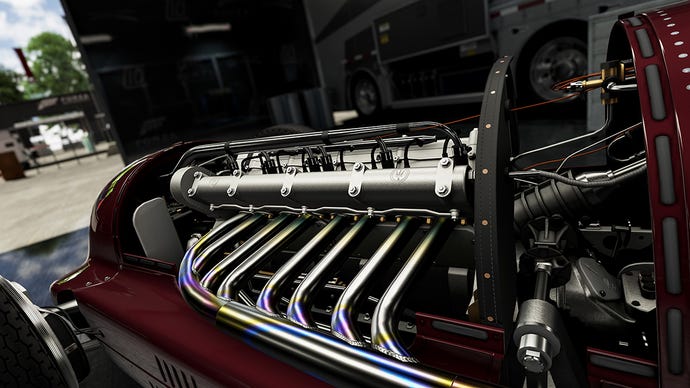Logitech G920 Driving Force Review: Seriously Improved Lap Times
Just how good is Logitech's latest racing wheel? We put it to the test.
This article first appeared on USgamer, a partner publication of VG247. Some content, such as this article, has been migrated to VG247 for posterity after USgamer's closure - but it has not been edited or further vetted by the VG247 team.
Over the years, I've used several steering wheels with racing games, mostly with Gran Turismo. I find that they generally help me drive more effectively – which is understandable since they're capable of delivering far more steering detail and better feedback than a regular controller.
But just how much better are they for driving than a controller? I thought I'd put that to the test while simultaneously reviewing the latest release from Logitech – the Xbox One-compatible G920, which is also available for the PS4 under the G29 moniker. Both formats are PC compatible.
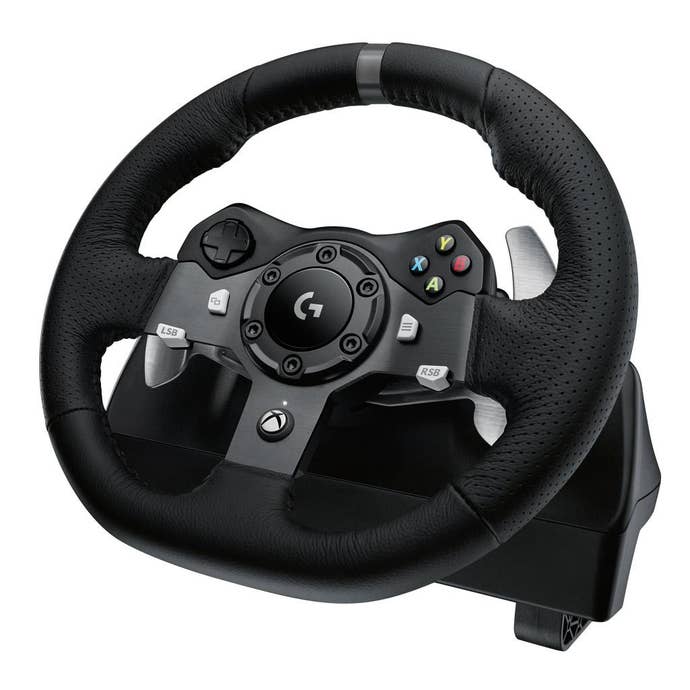
The G920 features a dual-motor force feedback system, with anti-backlash helical (aka dry fixed) gearing that's modeled after the same system used in car transmissions. What that ultimately means is a wheel that functions quite quietly, and feels tight and responsive in your hands. The wheel feels very durable – it has solid steel ball bearings in the wheel shaft that help add a feeling of solidity to the wheel's motion, and the wheel itself is made of hand-stitched leather and feels absolutely fantastic in one's hands.
The pedals are also of a very high caliber. They're made of steel, and like the wheel, they feel very robust. What I really like is that the brake pedal has non-linear travel which helps make braking feel very realistic. As you step on the brake the pedal loads up under pressure to make it feel uncannily similar to the real thing.
I mounted the wheel on my basic racing frame – it's a hand-made item I bought on eBay some years ago that's a cross between a Wheelstand Pro and the XL20D Xlerator Regular Stand. The bolt mounts are very easy to use and are quite flexible in terms of the adjustment scale, and they fixed my wheel to the stand very tightly. While you can bolt the wheel to a table, I do think that if you're going to invest money in a steering wheel, some kind of wheel stand is necessary to ensure that you're getting the best out of your setup – even though that might mean spending a couple of hundred dollars more.
Wheel set up correctly, and Forza 6 ready to race, I thought I'd start things out easy by lapping an E class car around Brands Hatch Indy circuit – a track I'm very familiar with. Starting with a controller, I completed fifteen laps in a Mini Cooper '65 and managed to notch up a 1:03.201 lap with ABS, TCS and auto gearbox – a setup I used throughout this test to ensure consistency. Then I jumped behind the wheel with the same tune and started playing. First of all, I had a tough time adjusting to the wheel, since it's been a few years since I last used one. It took a few laps to get used to the steering feel, and work out exactly how much I had to turn the wheel to steer correctly. However, after about ten laps or so, I began to intuitively understand the feel of things, and soon put in a lap time of 1:01.811. I was quite surprised at the difference, and thought that maybe I was simply getting more used to the track. However, I tried again using a controller, and while I did beat my prior time by a few tenths of a second, I couldn’t get close to my steering wheel lap time. My braking lacked finesse, and I just couldn’t quite manage to hold speed through long turns with a controller – whereas with a wheel I could do so with ease.
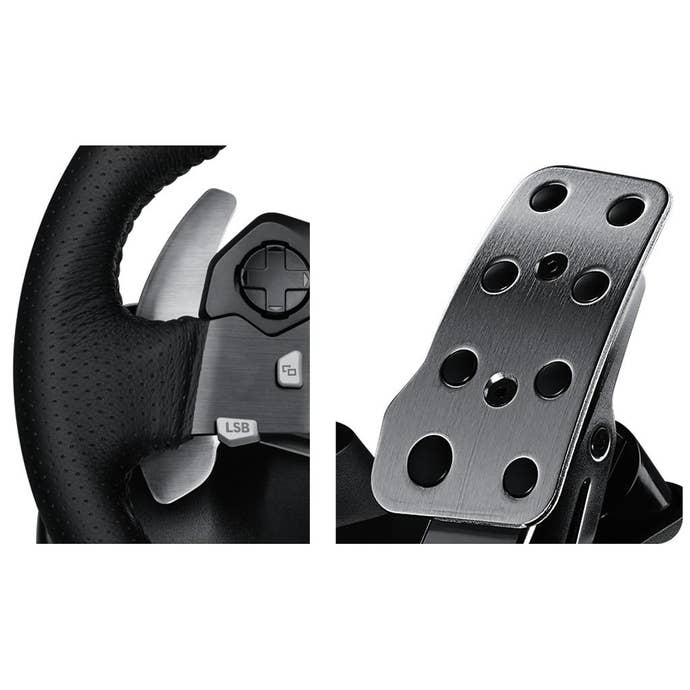
Next up, I used the same car on the Catalunya School track, initially managing a 0:57.845 lap time with a controller after twelve laps. Switching to the wheel again, I quickly put in a time of 56:700, and I'm pretty sure I could have beaten that by a few tenths of a second had I continued to practice. Again, the controller just couldn't get close to the cornering speeds and more accurate racing lines that I could achieve using the wheel and pedals.
Lastly, I moved up to A class racing, and took a Lancer MR '06 to the Alps Festival reverse track. My best time with a controller was 2:04.491, while my best time with a wheel was 2:02.787. Once again, I switched back to a controller while the track was still fresh in my mind and attempted to get close to my wheel time, but failed. I did improve my lap times by three tenths of a second, but that was about as good as it gets without making tune improvements to the car – which would of course ruin the test. The whole point is to use the same car under the same conditions to see just how much difference using a wheel makes.
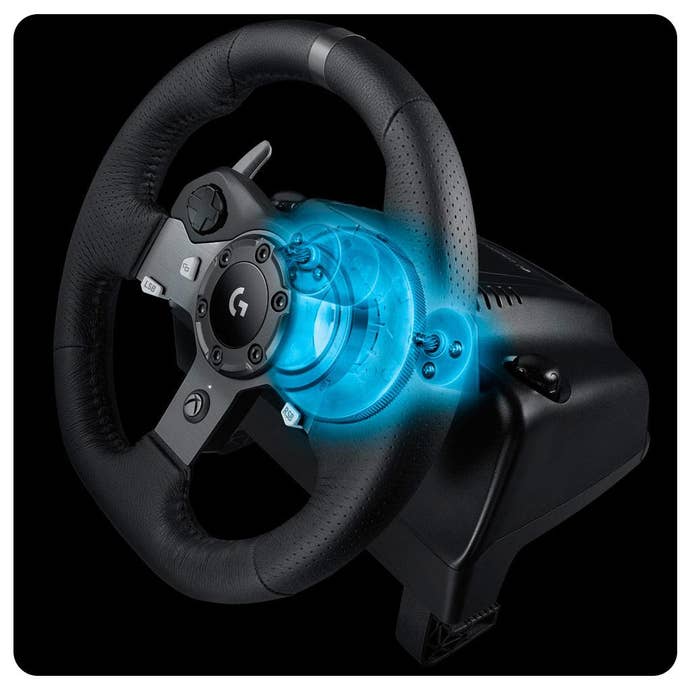
It might be obvious to most, but a wheel definitely improves the driving experience by a considerable degree. The biggest difference for me is the extra detail you have in terms of being able to dial up just the right amount of steering wheel input for the radius of a turn. Using a controller on a similar kind of turn, dialing up that same amount of input is far more difficult, and ultimately, most turns tend to be taken in a series of straighter lines connected by slight taps of the joypad to keep the car turning into the corner. With a wheel, you can dial up the perfect radius and control the car much, much more precisely and progressively, making micro-inputs to finesse the corner if the car starts to wander off the racing line. A controller is far clumsier, comparatively.
An odd effect that I noticed while driving with a wheel is that I felt like I was actually driving a little slower, even though I was putting in far superior lap times compared to using a controller. I found I was braking sooner into corners, and was able to get on the gas a little quicker thanks to the vastly improved steering input, and I was losing a lot less traction through sliding and wheelspin than I was with the controller. The G920 does an amazing job here, and you can really feel the different road conditions through the wheel.
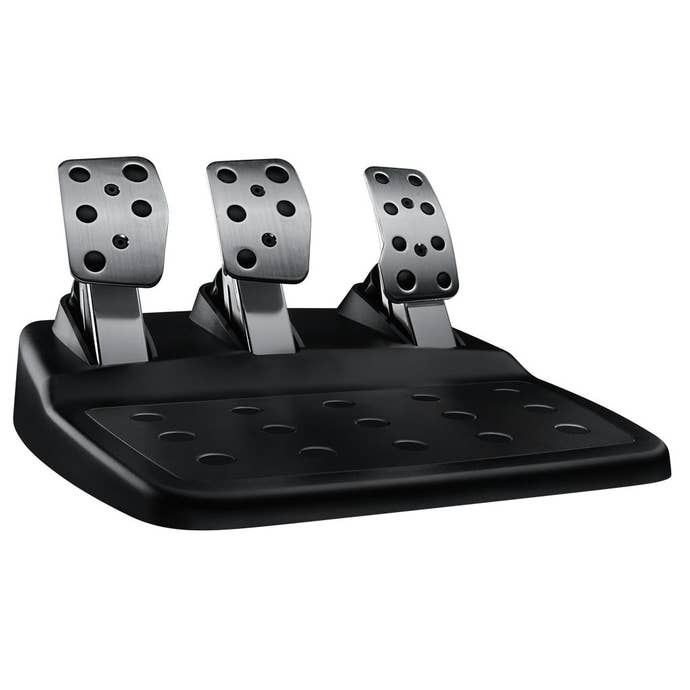
I also found that I was braking far more progressively when using a pedal. Again, that's a fairly obvious conclusion, but one that does make a huge amount of difference when it comes to shaving seconds off your lap times. The G920's pedals work exceptionally well, and deliver a highly realistic feel. Combine that with the force feedback coming from the wheel, and you have a setup that does an incredible job in communicating what the tires are doing. And because of that, you can quickly make the necessary adjustments to both pedal and wheel to ensure that your car uses its available grip most effectively.
I always knew that the wheel was going to deliver superior lap times and much better racing feel than a controller, but playing it back-to-back with a controller hammered that fact home. Then again, at a retail cost of $399.99, the Logitech G920 certainly needs to deliver on improved times and a true racing feel to justify its pretty hefty price tag.
What's for sure is that the G920 is a very, very nice piece of kit that transforms the racing experience into something that feels exceptionally realistic, especially when paired with a game like Forza 6. After I was done with the wheel versus controller test, I switched to a manual gearbox and found that the paddle shifters were great to use, and far more effective than the rather clumsy controller shifting – and, thanks to that, my lap times continued to improve. I also drove a few laps in the wet and again found that the improved feel over a controller helped me drive far more effectively – I could react more quickly and accurately to aquaplaning and stay on the track far more easily. Indeed, thanks to the great steering communication delivered by the G920, I think I'll probably be able to turn off TCS as well, which will further improve my racing times.
The obvious question is that while it's clear the G920 is an exceptionally high quality wheel, and one that is by far the best I've ever used, is it worth the money? I really can't answer that for you, because value is such a personal thing. All I can say is that it works extremely well, and compared to a controller, delivers a vastly superior driving experience that enables you to shave seconds off your lap times. If you're really serious about racing games, and do have money to burn, I can't think of a better way to get the most out of your racing experience than with this.
